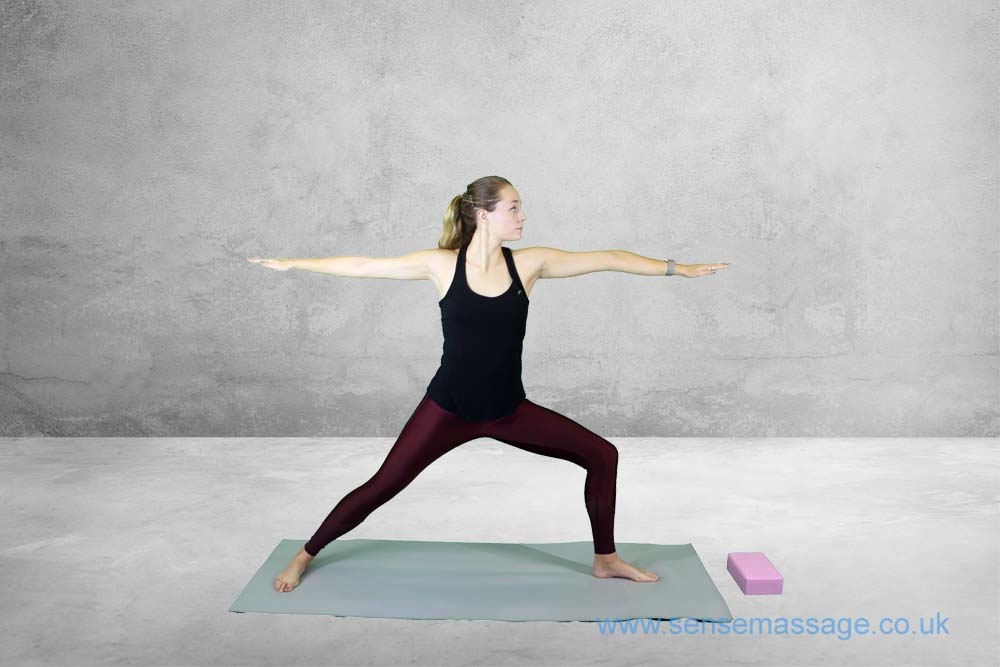The catalyst that brings on this face scrunching, tear inducing condition can range from poor posture, muscle atrophy, ageing, strains, injury or osteoarthritis. Some common causes of back pain can include:
- Strains in the muscles, ligaments, or tendons brought on by incorrect lifting techniques or weak muscles that have been over exerted
- Herniated or ruptured disks – as we age the discs between vertebrae become less-supple making them more susceptible to bulging (herniation) or rupture.
- Arthritis, or cancer – can be brought on by hereditary conditions in the family or by autoimmune disfunction.
- Kidney infection - bacteria enters your body and effects the back area causing pain
- Stress on the spine or minor traumas brought on by injury
- Muscle tension brought on by overworked muscles or psychosomatic conditions such as stress and anxiety.
It is very important to ascertain what the cause of your back complaint is by visiting your doctor and obtaining a correct diagnosis. Once diagnosis has been given you can then begin a correct rehabilitation program that is right for you and follow advise from your care professional or physiotherapist.
For many non-serious conditions that are not in the acute or early stages of repair can benefit from some mobility and strengthening programs. Back muscles and soft tissues typically need to be strengthened after injury and following some simple yoga moves will help to strengthen, stretch, and improve flexibility in the back and core area. The movements should feel comfortable and not cause any pain. It’s always important to take it slowly in the beginning, listening to the feedback your body is giving you. Enjoying the graceful flow of movements and learning to breathe deeply filling your body with essential oxygen, and inducing relaxation.
Even though we are not going to performing any high intensity moves as with all exercise routines it is important to warm the muscles. The routine has been designed to warm you as you progress through the moves and will take approximately 10 minutes.
Begin with Mountain Pose, a warming movement and hold each move for one minute or for as long as you feel comfortable.
Mountain pose - Tadasana or Samasthiti
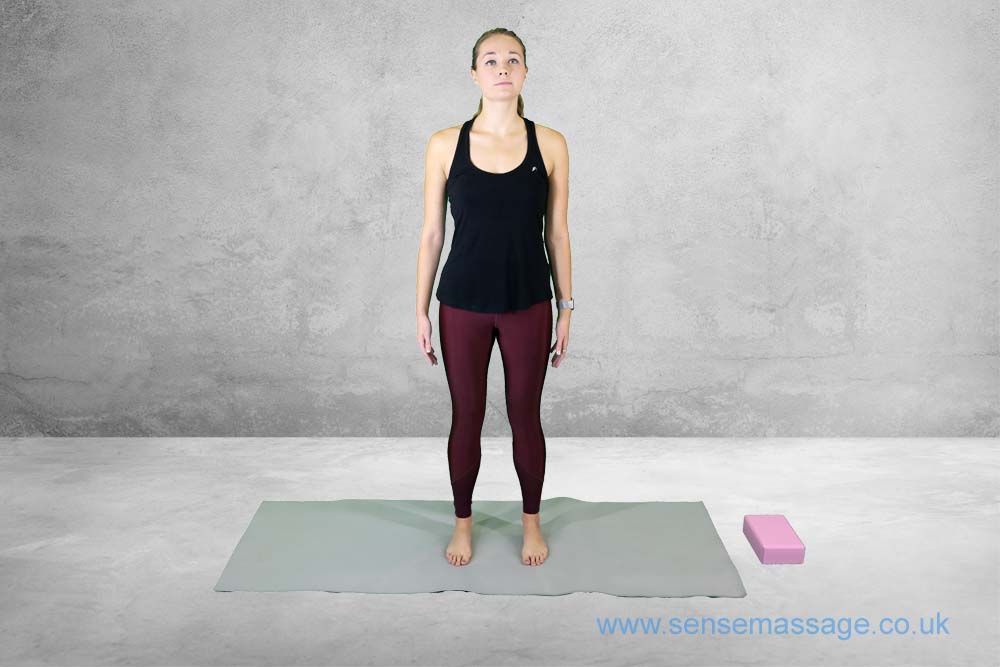
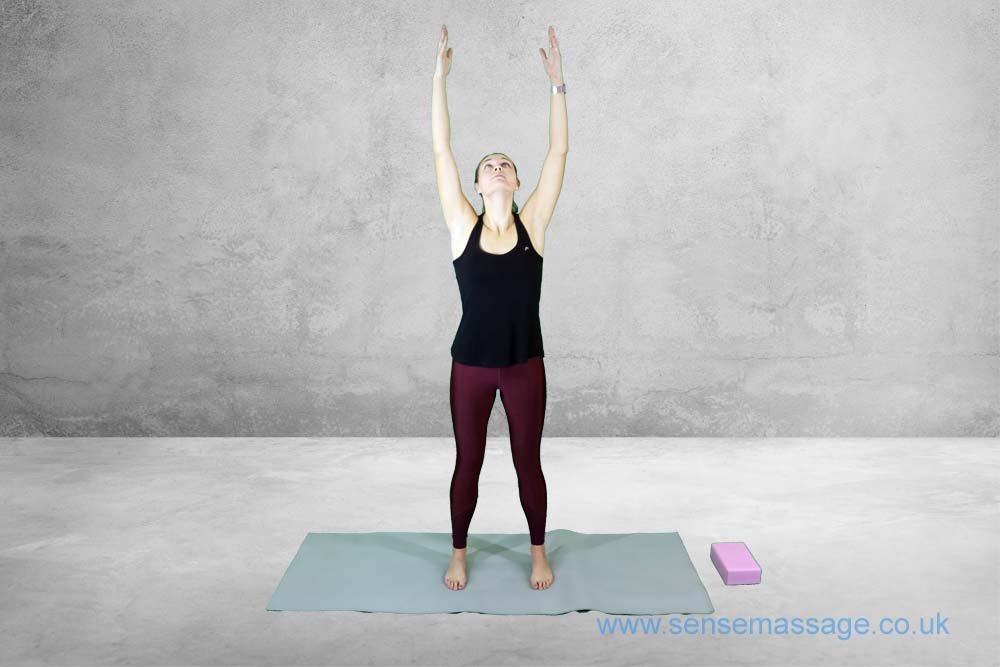
Is just standing still, right? Wrong!
This is a grounding pose and excellent to begin any yoga routine, it is helpful for good posture and will help strengthen back muscles. The aim is to establish perfect alignment and start to engage all the muscles of the body. Starting at the feet. Arms are held down at the sides of the body. Bring the feet as close together as your balance will allow. Press the toes into the floor and balance out the body so your weight is evenly distributed. Begin to squeeze the legs together engaging the muscles but don’t lock out the knees, feel strength rising through the body into the pelvis. Contract the gluteal and abdominal muscles creating a strong core and straighten and align the pelvis. Work up towards the chest and as you draw the shoulder blades down the back, bring the chest muscle (pectorals) into a slight contraction and allow a slight lift to occur in the chest area. The shoulders and hips should be stacked in perfect balance over the centre of the feet.
Rise the chin a little and elongate the neck. Arms hang down by the sides relaxed. Imagine a central rod through your body and hold this pose for 30 seconds to minute. If you feel off balance at any time widen the legs for a more secure base. Focus on breathing gently and deeply in & out.
Warrior 1 – Virabhadrasana l
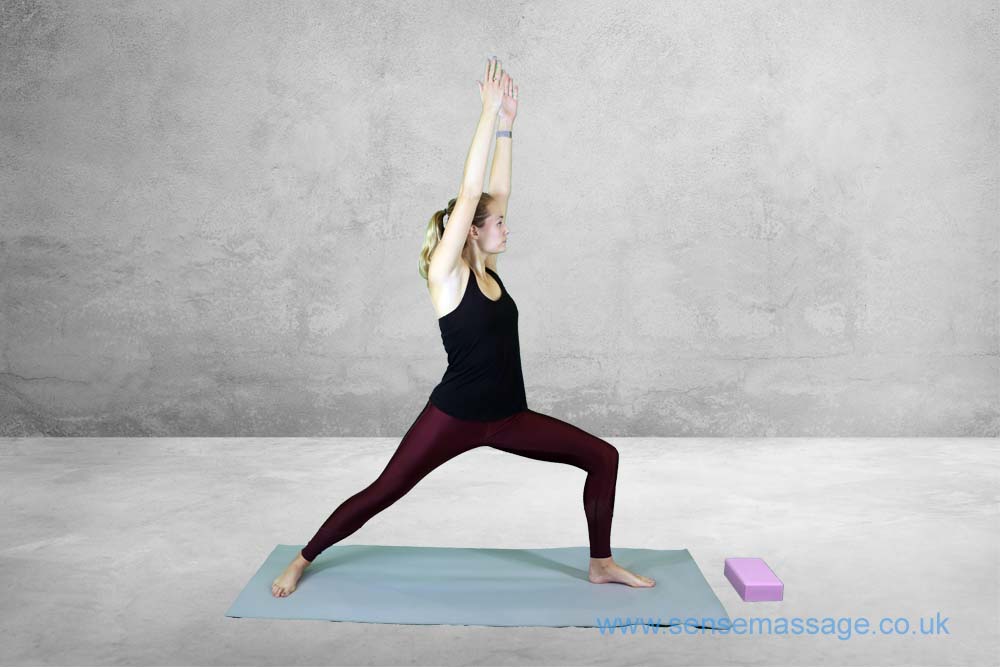
This move will open the chest and warm the legs, lunge only as far as you can without causing discomfort. This static lunge position is good for strengthening the legs, arms and gluteal muscles. A safe movement for rehabilitating a bad back but modify the range of movement and ensure you are not in any pain. Slide the front leg forward into a lunge position and rotate the back foot out, bend the knee over the toe as far as possible while maintaining a strong position. First reach the hands above the head stretching up toward the sky and draw the shoulder blades down the back. Hold this position for 30 seconds. Return to mountain pose and then begin the pose on the other leg.
Warrior 2 – Virabhadrasana ll
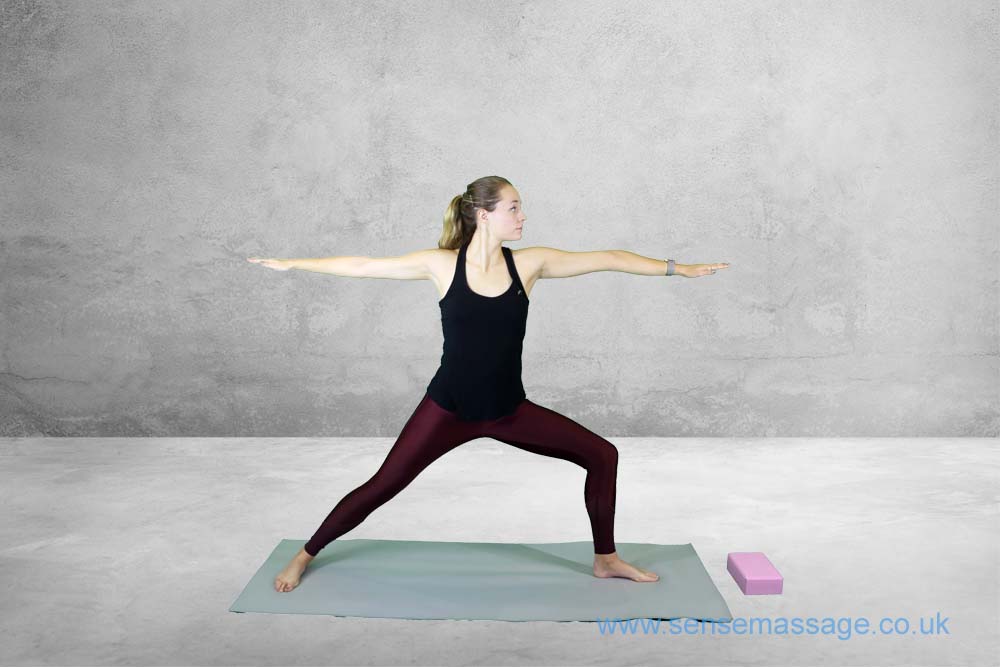
Repeat this move with the same leg lunge movement but now reach the arms in front and back, palms down, reach for the walls, allow the pelvis to rotate slightly in the same direction as the back facing knee- hold for 30 seconds.It is important to modify the foot rotation if it feels uncomfortable or makes you feel unstable. The back knee should not feel under pressure or twisted.
Repeat on the other leg and hold for 30 seconds.
Half Moon Pose – Ardhacandra
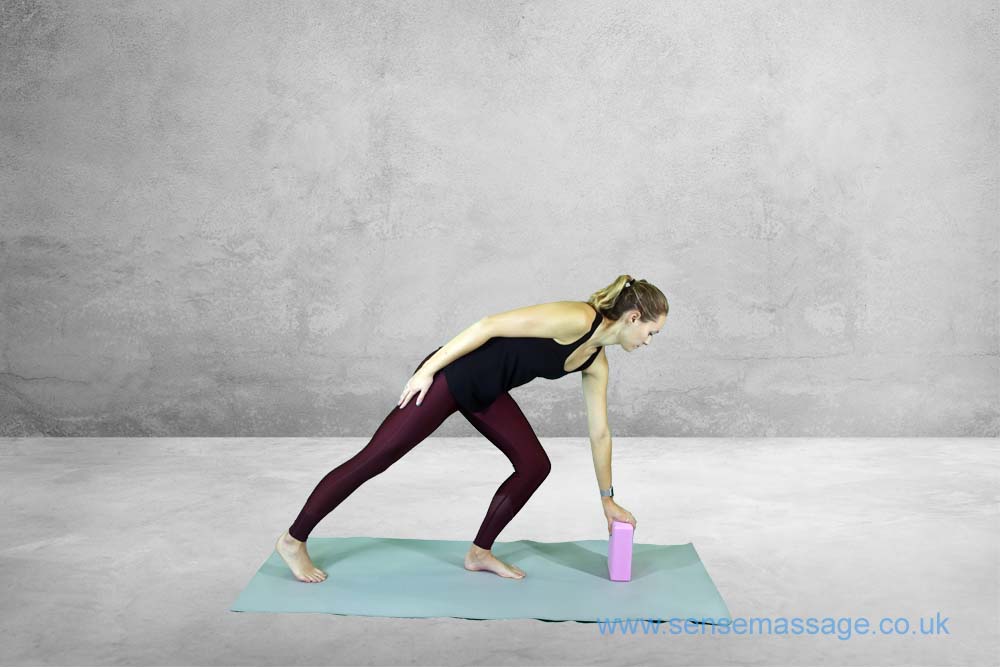
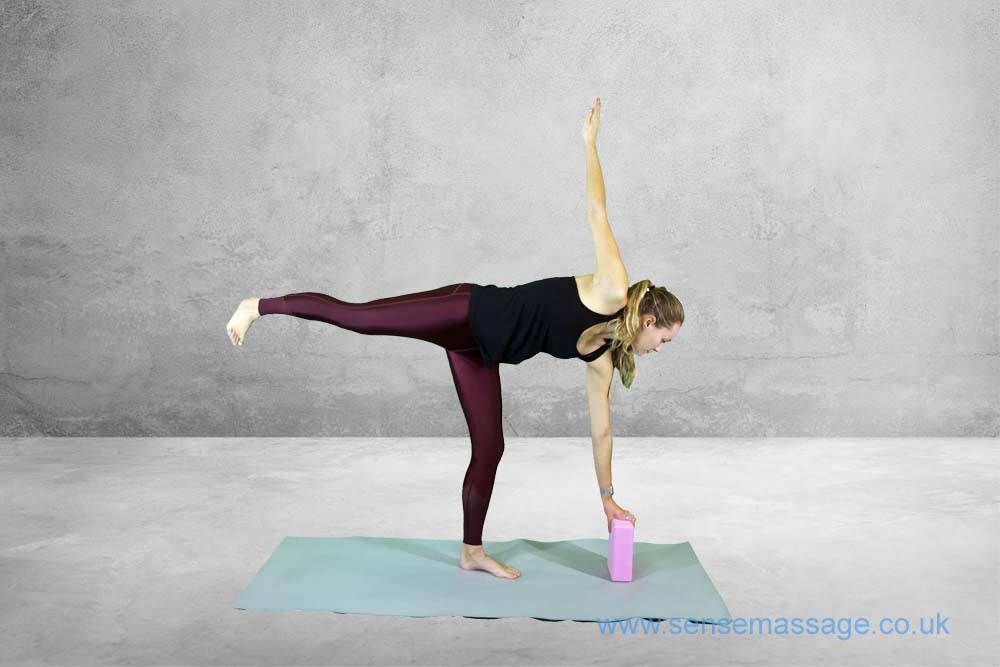
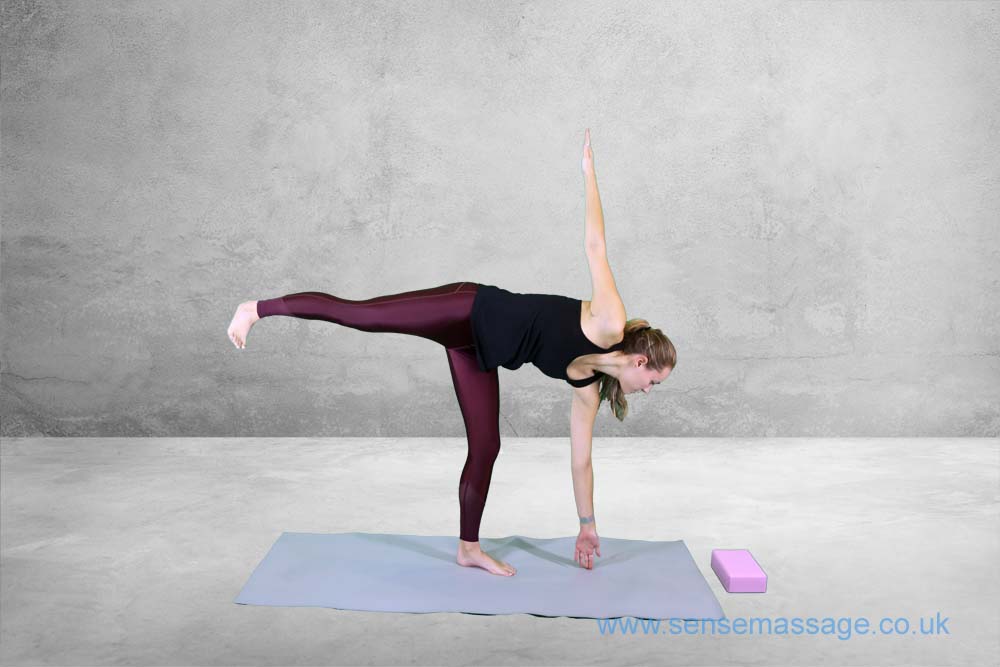
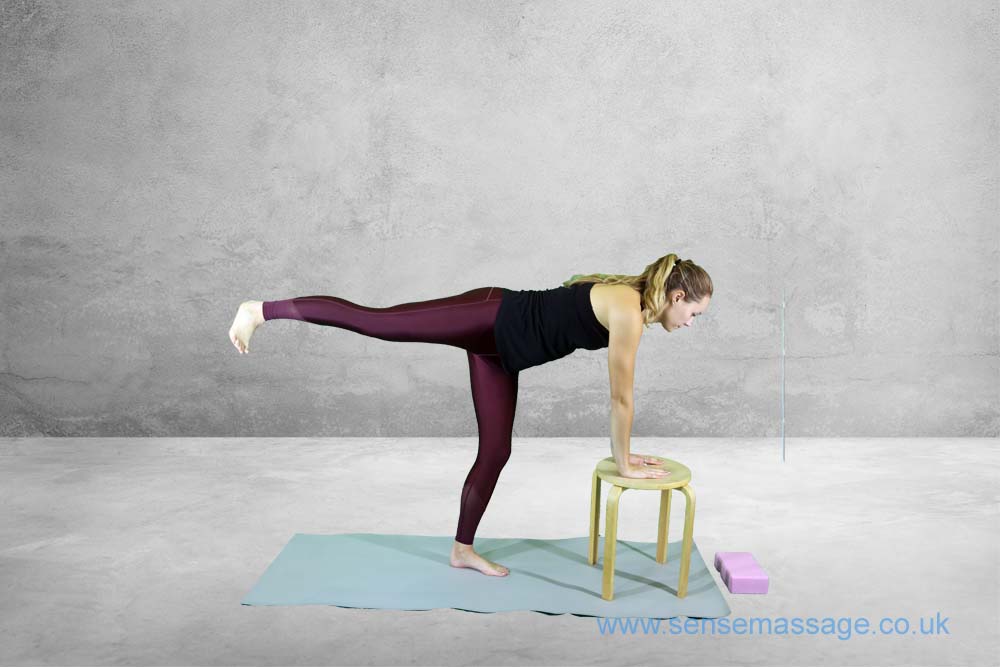
Core and leg strengthening move. Opens out the chest and improves balance.
Right side. Step forward on the right leg, bend the knee and reach down to the floor with the right hand. Slowly straighten the right leg whilst at the same time lift the left leg straight out behind you. The left foot is flexed and strong. Right leg is anchored to the ground. Concentrate on body balance and slowly open out the hips so the body is rotated slightly left. Modification - lift the left leg as high as you can comfortably manage, use a table or chair to hold onto. Concentrate on maintaining a good balanced pose. Return to the start position and repeat on the other side. Hold the position for 30 seconds on each side or for as long as you can manage.
Cow / Cat Pose
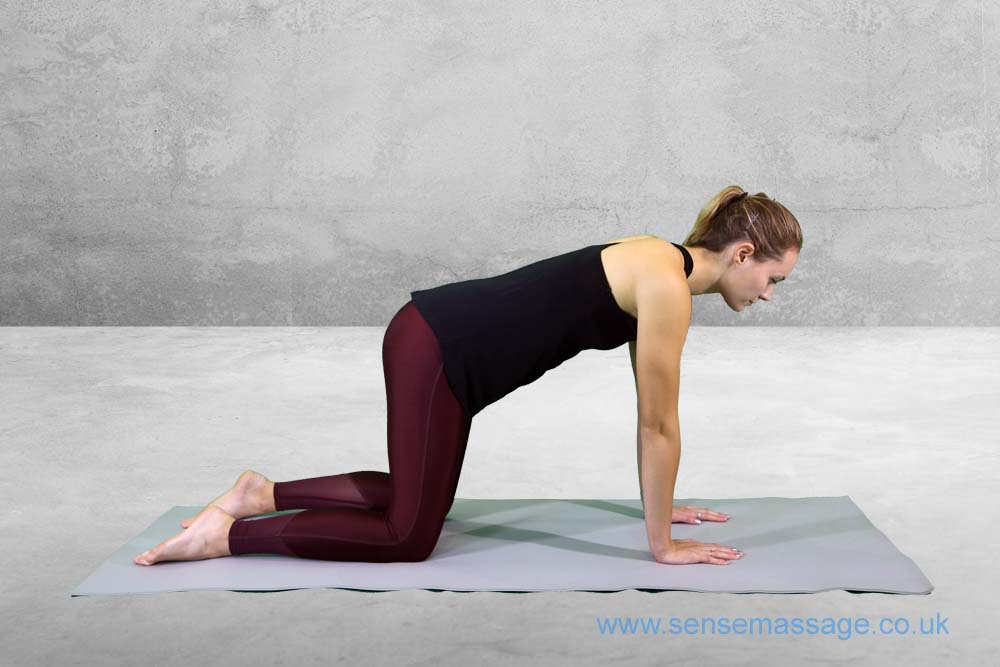
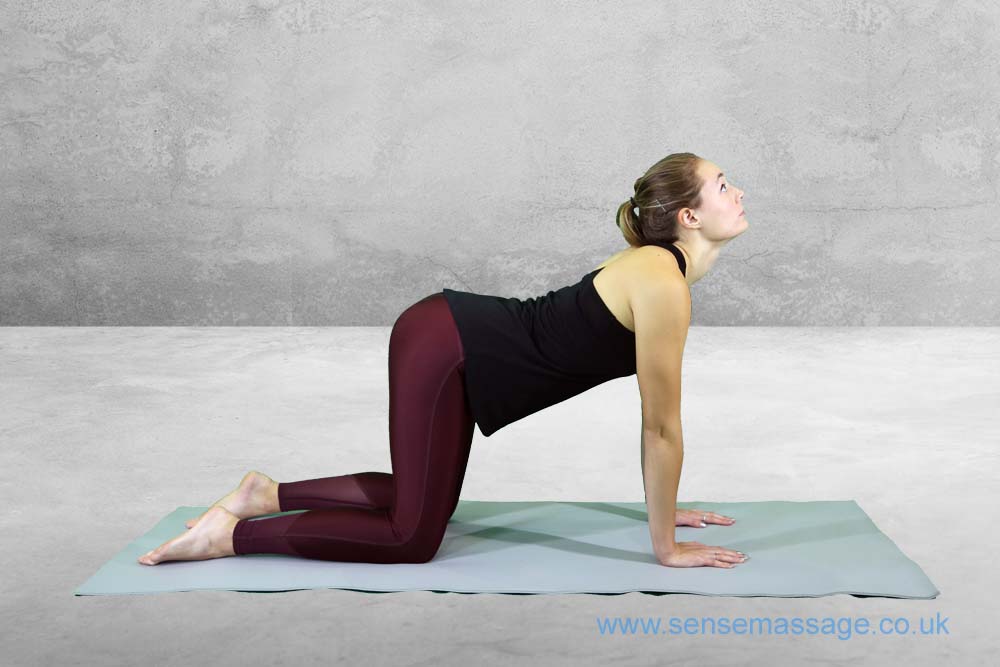
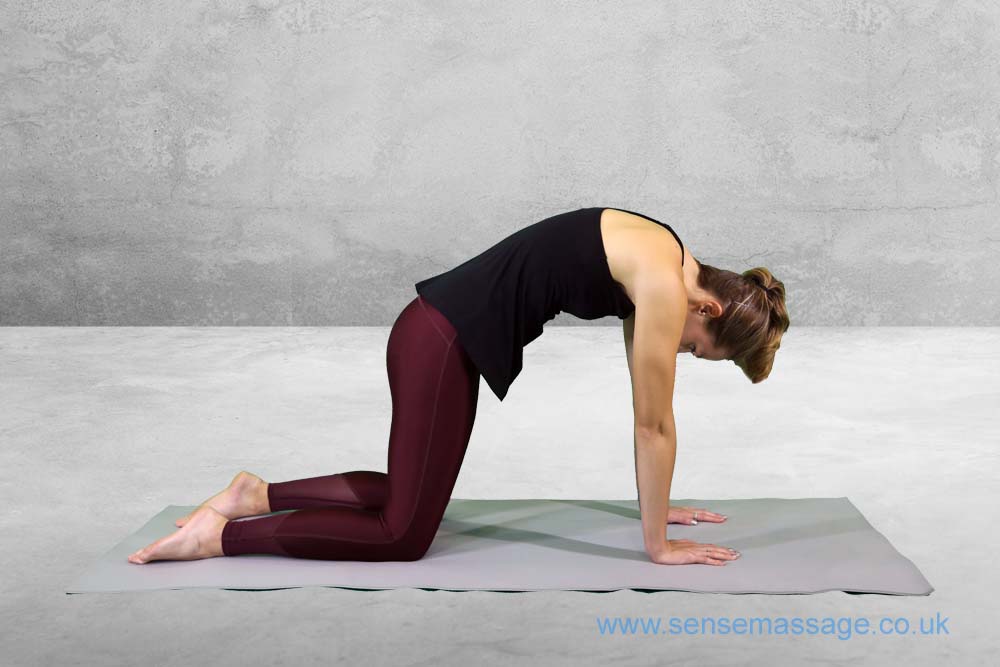
Cow Pose - Bitilasana – Bitil meaning cow, and asana meaning pose
Cat Pose - Marjariasana - Marjari, meaning cat, and asana meaning pose.
This movement warms the spine and is good for vertebra flexibility by helping open out the spine and chest. It also works on core strength.
Begin on the floor on all fours the back in neutral position, knees hip width apart. Slowly lift the head and round the back so the chest and abdominals drop slightly lower to the floor. Breath in as you arch up. Don’t force the movement and only round as far as is comfortable for you. Move into Cat pose by breathing out and rounding the back up towards the sky, drawing in the abdominals and tucking in the chin and head. Alternate fluently between each movement slowly applying 4 /6 repetitions and returning to neutral spine position when finished.
Downward Dog - Adho Mukha Svanasana
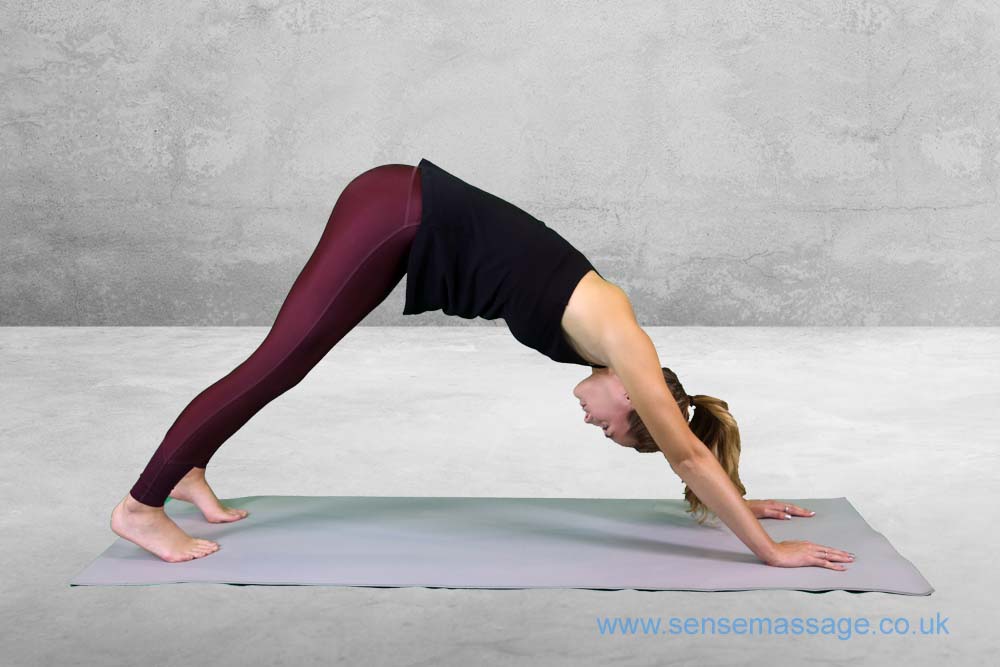
Will stretch through the body and strengthen the core. Particularly good for tight hamstrings. Imagine you are making an upside down V shape ^
You can flow from Cat/Cow pose into Downward Dog by beginning on the floor on all fours. Start to straighten out the legs, bending at the knee joints, straighten the legs to a comfortable position for you. Drawing in the abdominals and lengthening the back, press the chest towards the legs whilst lifting and tilting the pelvis upwards. You will be able to feel a stretch throughout the body. Breathing gently in and out as you hold the pose for 30 seconds return to the floor by dropping the knees down. Rest for a moment and then repeat for 30 seconds.
Childs Pose - Balasana
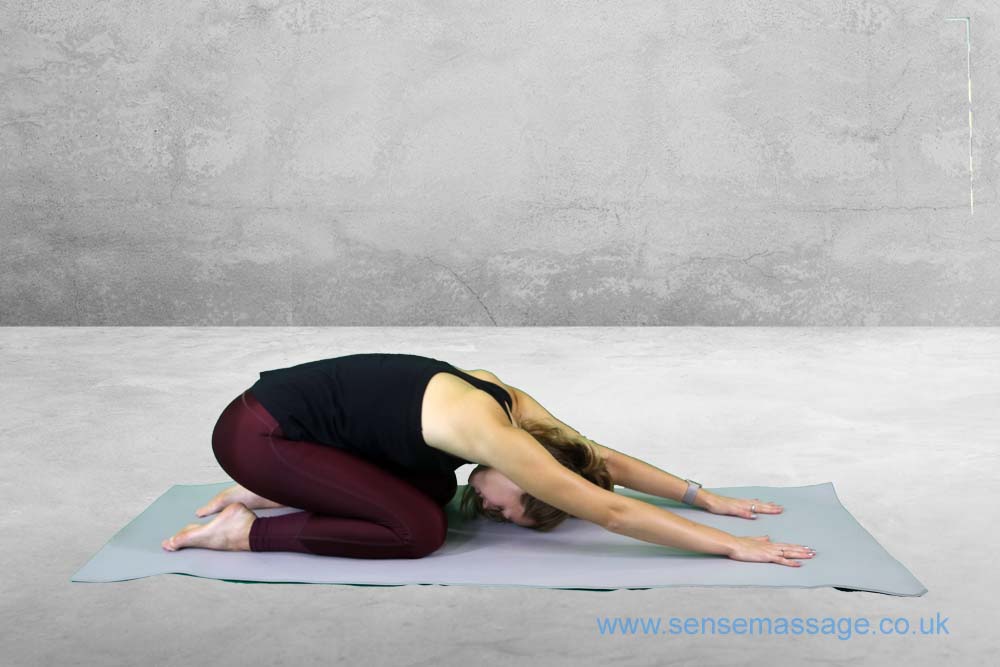
Kneel on the mat and lower the chest to the floor with the arms stretched out above the head, the hands should be together, sit the ischium (bum) bones back on the heels. If you have any knee problems support the body weight with the hands at the side of the body whilst in the kneeling position, keep the weight forward to avoid deeply bending the knee. Alternatively, open out the knees wide and sit back on a cushion or yoga block. Reach the hands away from the body stretching through the back. Relax and hold
Plank
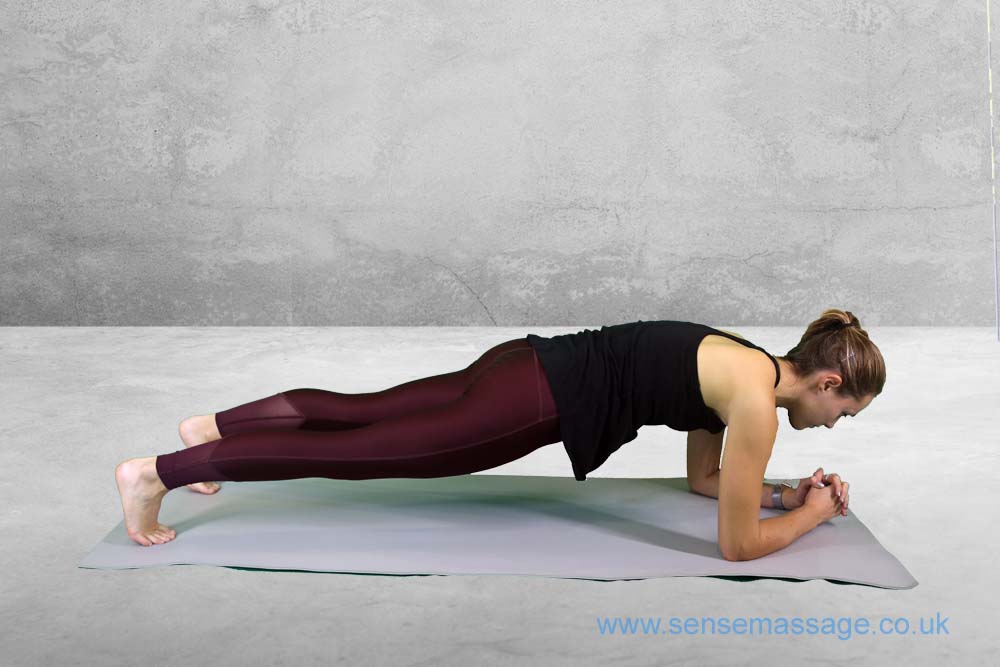
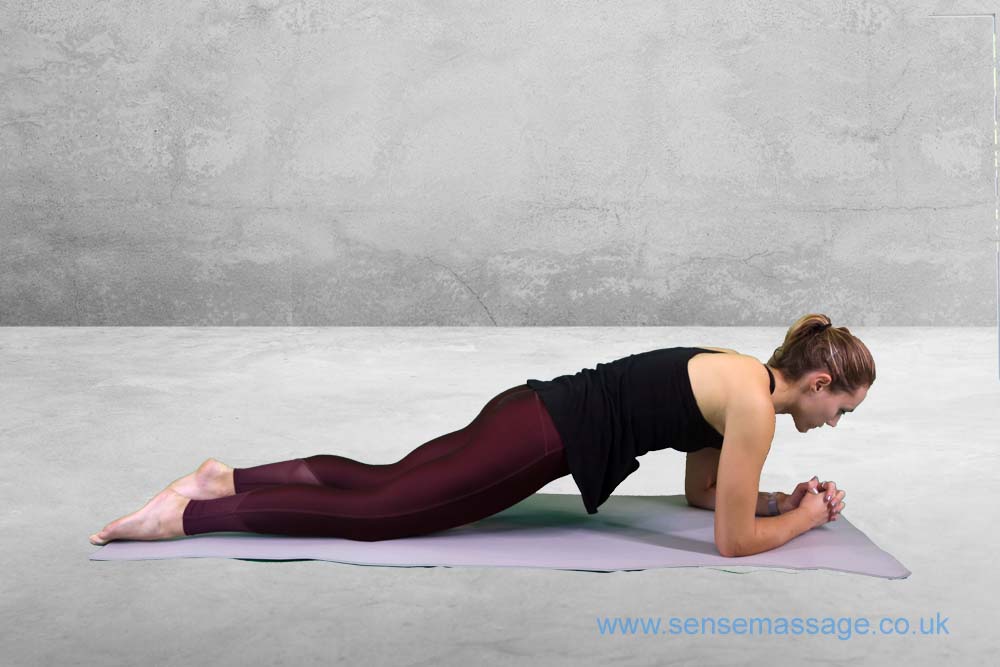
An excellent exercise for safely increasing core strength. From an all four position, drop down onto the elbows and extend the legs out, balancing on the feet with a completly straight back. Keep the head in line with the rest of the body. For a modification drop onto the knees with the legs slightly bent. Contract the abdominals keeping a strong core. You need to be able to maintain a solid neutral spine, if at any point you feel the back beginning to drop rest and return to all fours. Hold the position for as long as you can manage and then rest. Repeat the move. Keep a note of how long you are able to hold and keep increasing each time you return to the yoga routine.
Half Bridge Pose - Setu Bandha Sarvangasana
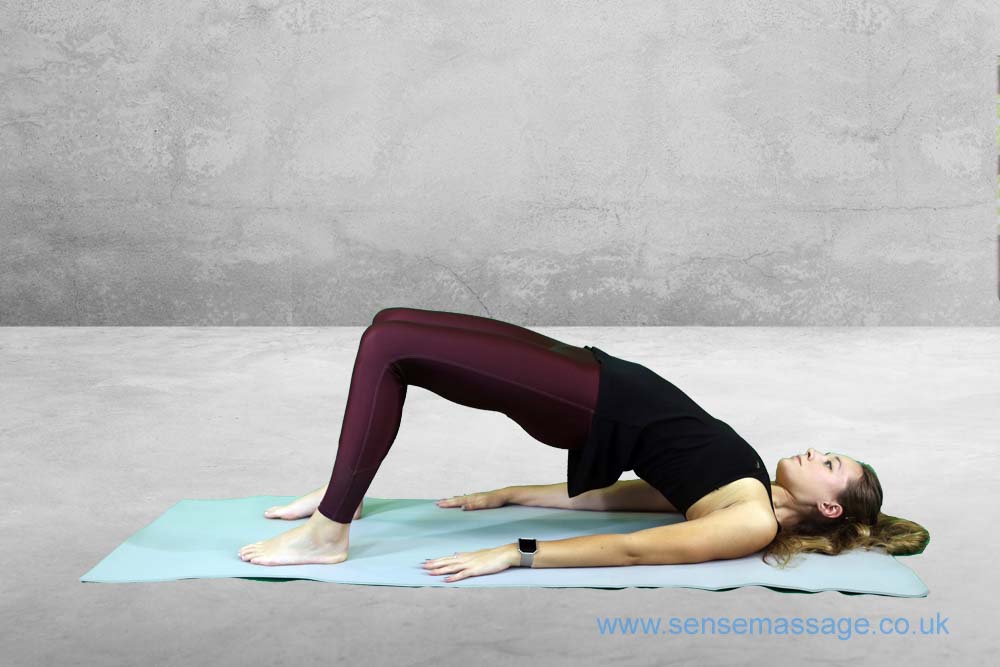
This move will stretch hip flexors and strengthen the gluteal muscles. Good for runners.
Apply this modified yoga version by laying on your back with the knees bent, slowly and gently lift the hips up towards the sky, breath in and ensure there is no discomfort in the low back area. The arms are on the floor by the sides of the body supporting the weight. Hold the position for 30 seconds or for as long as you can manage. Return to the mat. repeat the movement.
Corpse Pose - Shavasana
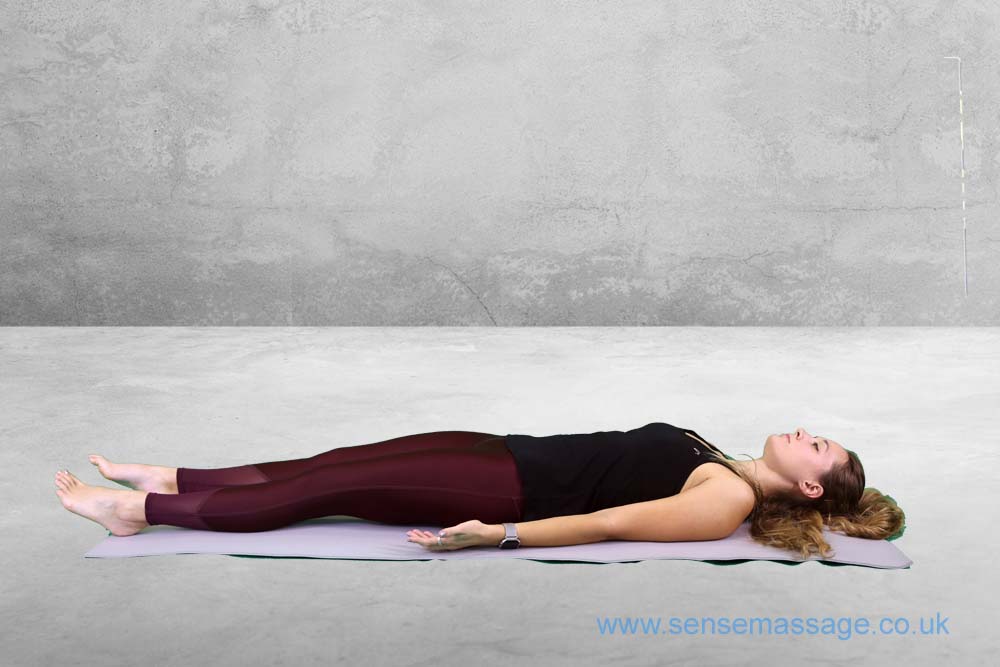
Finish with corpse pose to relax the mind and body. Lay flat on your back and let the feet fall outwards, arms by the side of your body and palms facing upwards. Close the eyes and allow all the muscles and tension to soften and melt away. Quieten the mind and focus on breathing gently in and out. Relax for 5 minutes. When you are ready apply a slight contraction in the abdominals to support the back and roll on to your side (fetal position) use the hands to push you into sitting position then slowly raise to standing.
Transferring from the floor into standing with back pain.
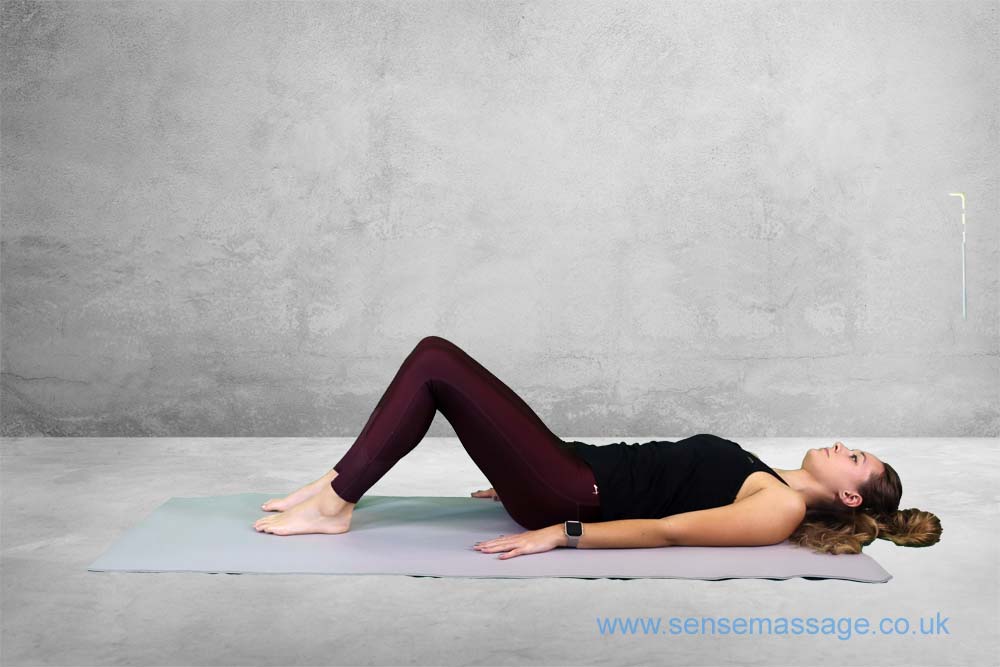
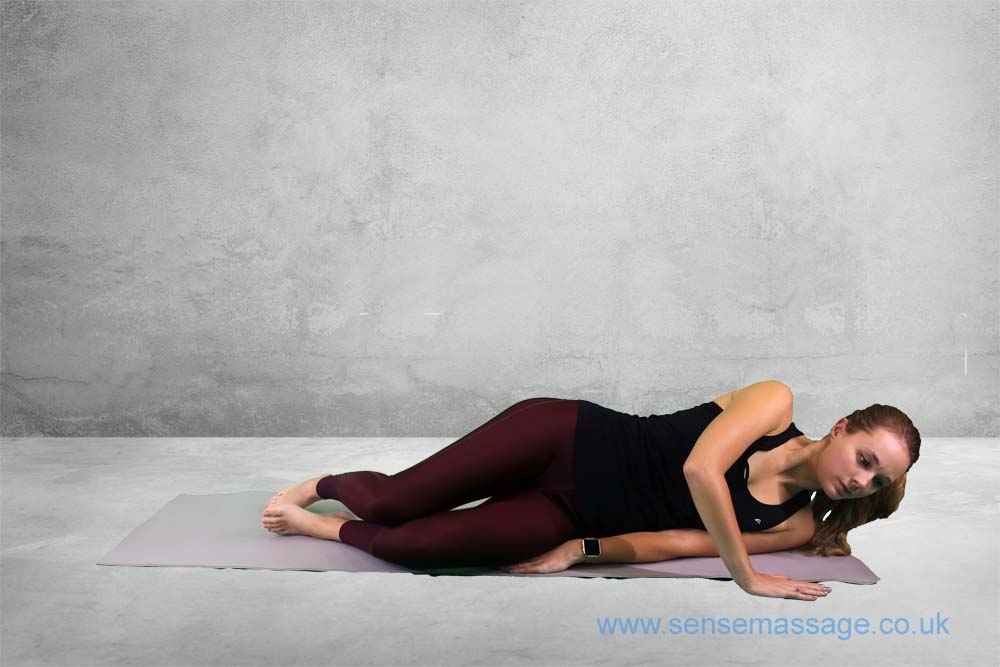
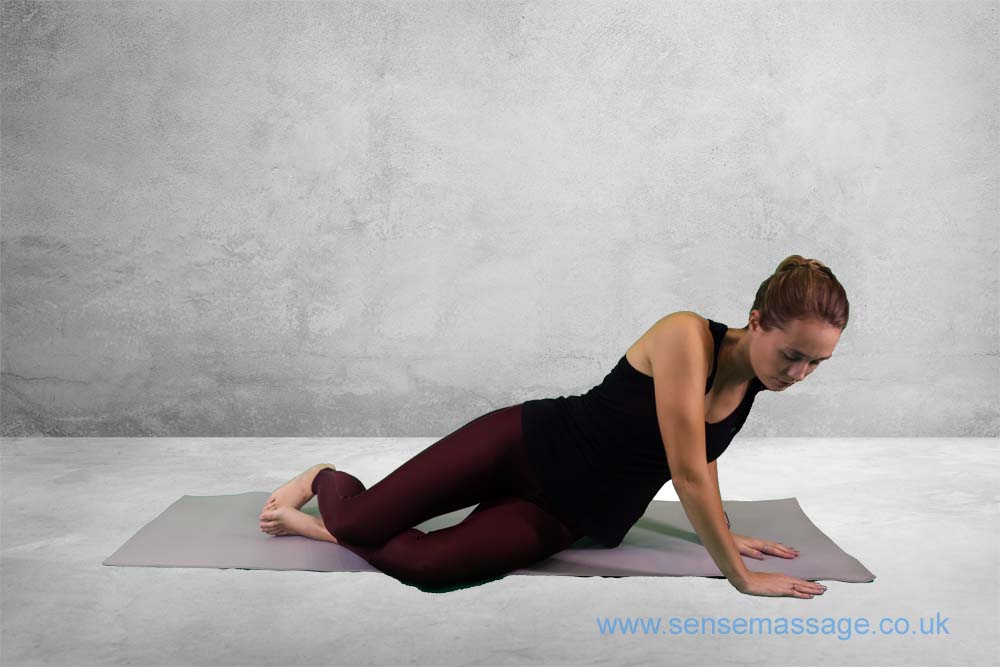
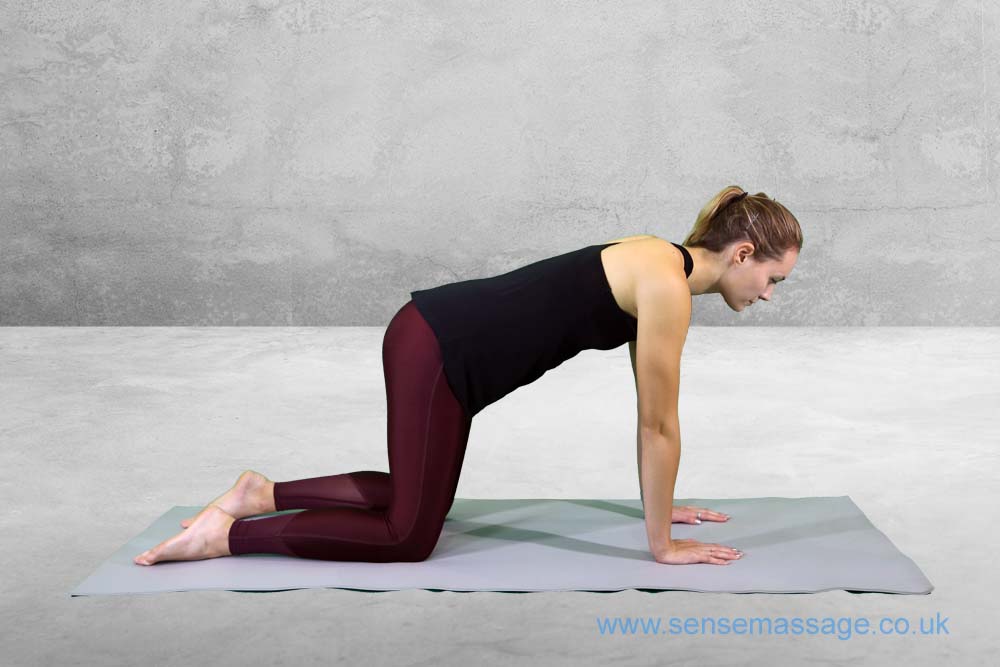
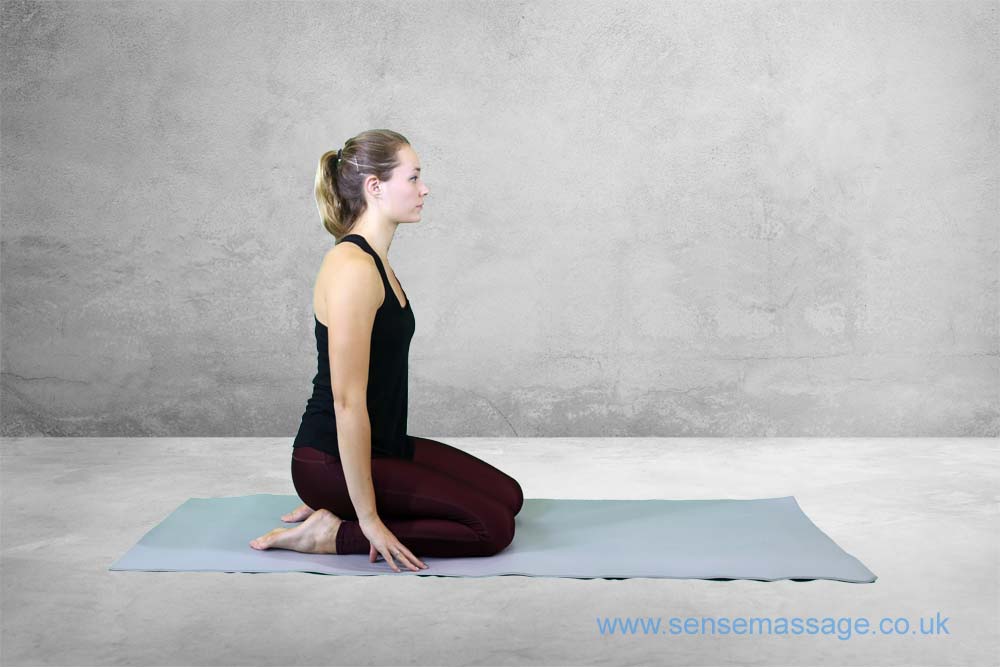
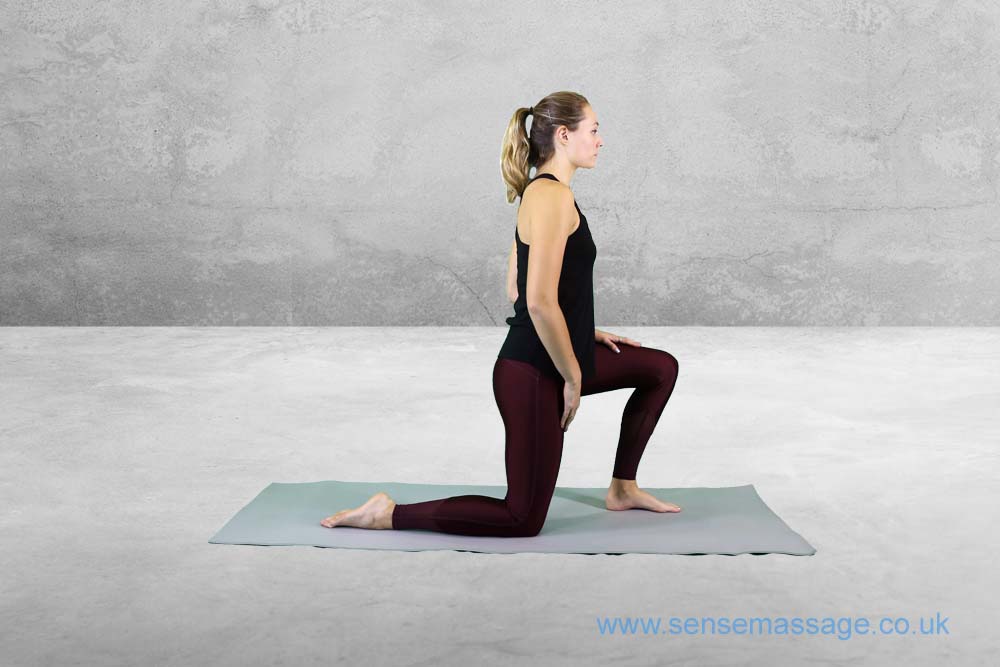
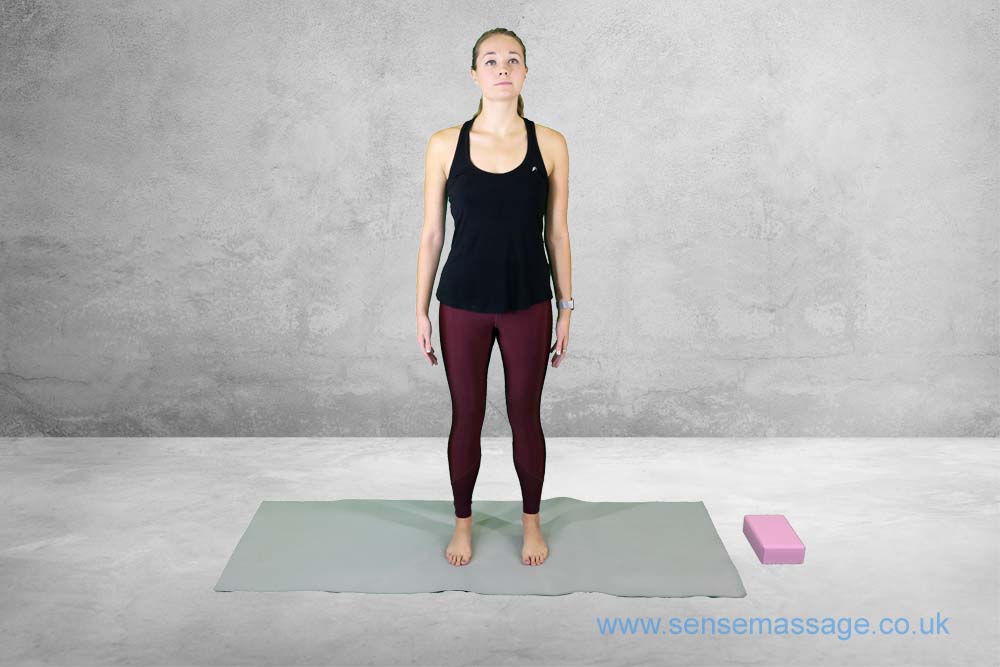
It is very important to correctly move into a standing position to protect the back when transitioning from a sitting or laying position. The abdominal muscles act like a natural girdle and should be contracted when the back needs to be protected. For example when lifting heavy objects or when raising from a sitting or laying position.
When transitioning from the floor to a standing position, keep the back as straight as possible at all times. Roll onto the side (foetal position) use the arms to support the weight of the body and push with the arms to bring the torso into a 45% angle. From here rotate the torso and come onto all fours keeping the abdominal muscles contracted. Rest back onto the heels, keeping the back vertical. Kneel up whilst maintaining contracted abdominal muscles and then take one foot out in front so you are down on one knee. Straighten the body and rise into a standing position, keeping the spine as straight as possible at all times.
